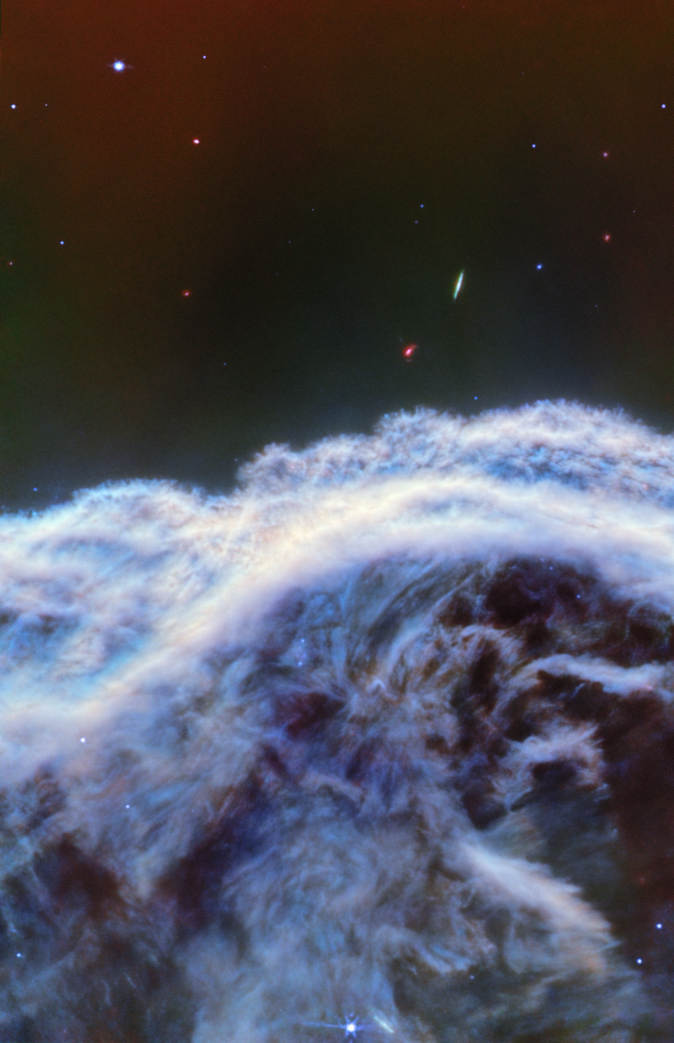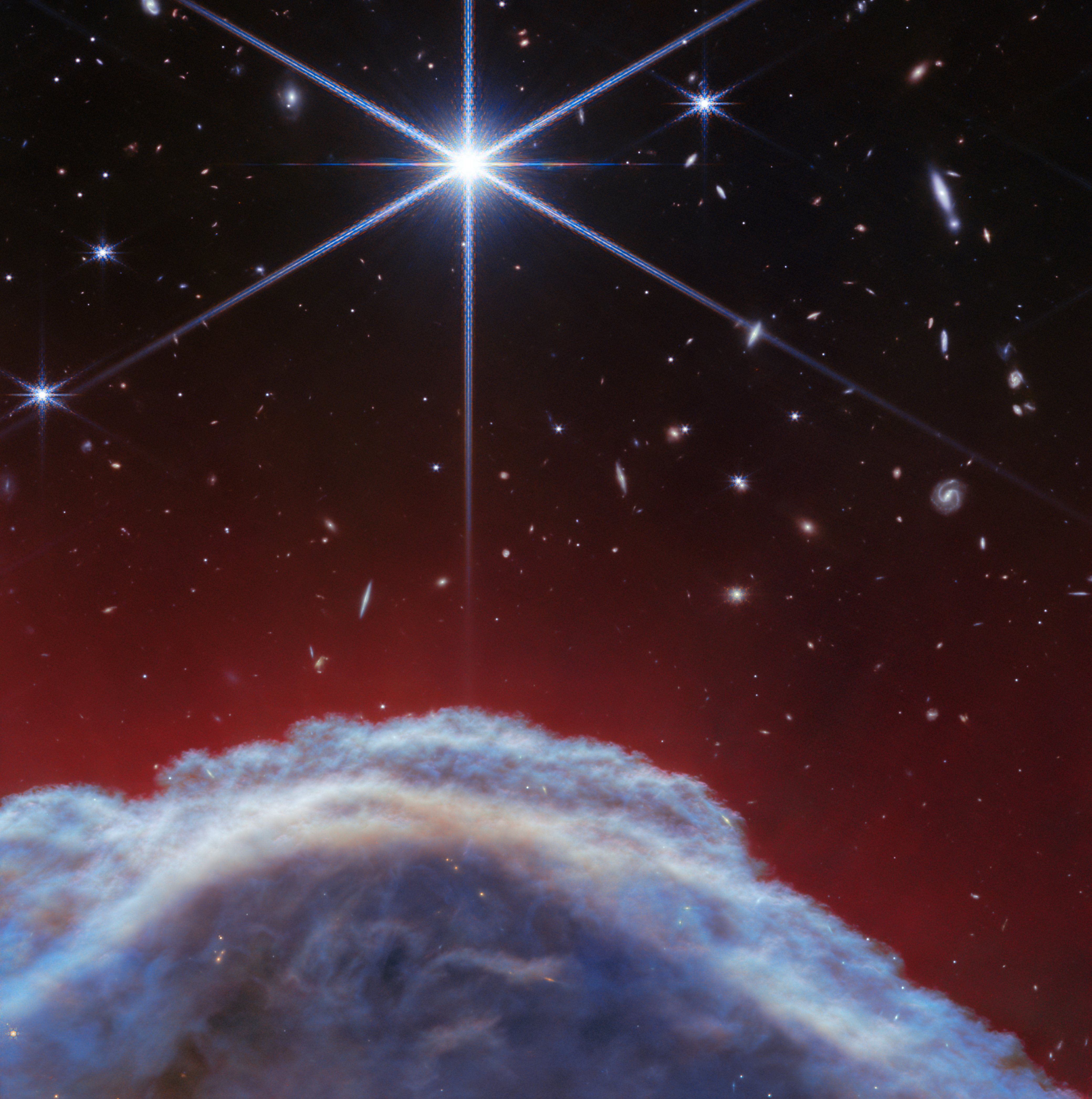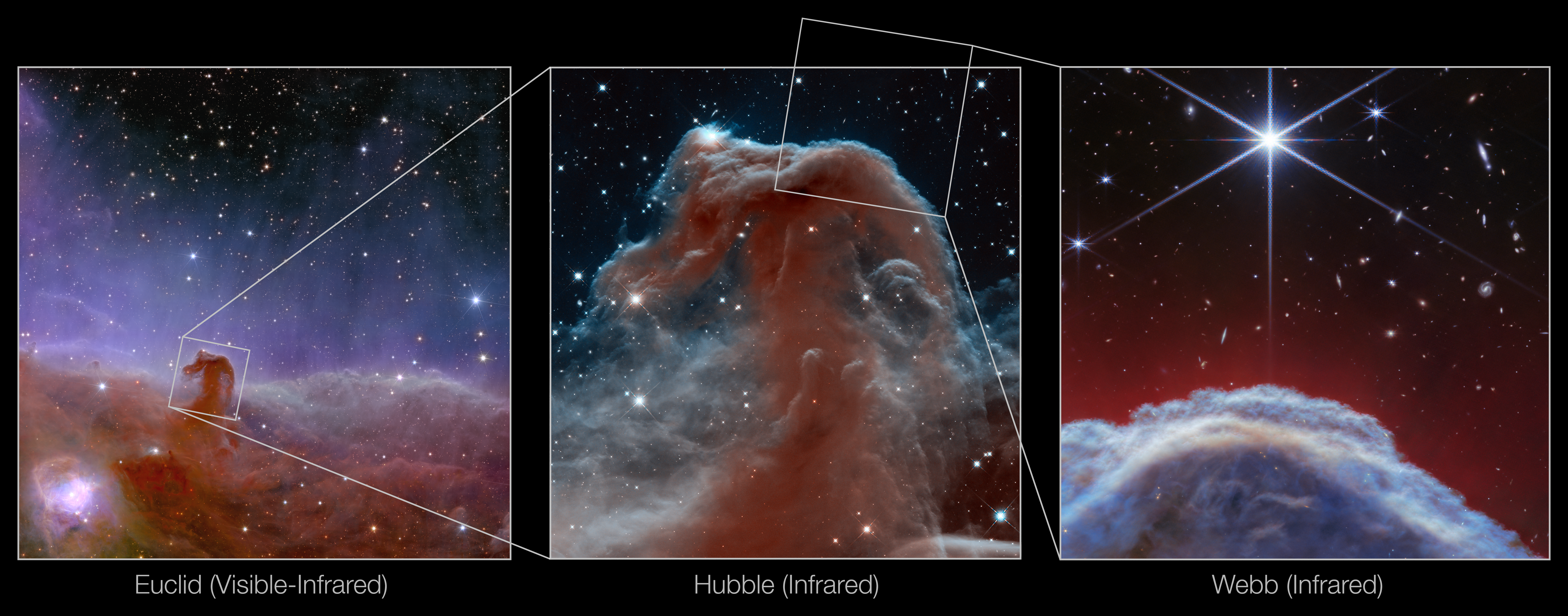1 min read
Horsehead Nebula (MIRI Image)

This image of the Horsehead Nebula from NASA’s James Webb Space Telescope focuses on a portion of the horse’s “mane.” It was taken with Webb’s MIRI (Mid-Infrared Instrument). Mid-infrared light captures the glow of substances like dusty silicates and soot-like molecules called polycyclic aromatic hydrocarbons.
In this image, blue represents light at wavelengths of 5.6, 7.7, and 10 microns; green is 11, 12, and 15 microns; and red is 18, 21, and 25 microns.
About the Object
- R.A. PositionR.A. PositionRight ascension – analogous to longitude – is one component of an object's position.05:40:52.62
- Dec. PositionDec. PositionDeclination – analogous to latitude – is one component of an object's position.-02:28:47.49
- ConstellationConstellationOne of 88 recognized regions of the celestial sphere in which the object appears.Orion
- DistanceDistanceThe physical distance from Earth to the astronomical object. Distances within our solar system are usually measured in Astronomical Units (AU). Distances between stars are usually measured in light-years. Interstellar distances can also be measured in parsecs.1,300 light years
- DimensionsDimensionsThe physical size of the object or the apparent angle it subtends on the sky.Image is about 1.3 arcminutes across
About the Data
- Data DescriptionData DescriptionProposal: A description of the observations, their scientific justification, and the links to the data available in the science archive.
Science Team: The astronomers who planned the observations and analyzed the data. "PI" refers to the Principal Investigator.This image was created with Webb data from proposal 1192 (K. Misselt)
- InstrumentInstrumentThe science instrument used to produce the data.MIRI
- Exposure DatesExposure DatesThe date(s) that the telescope made its observations and the total exposure time.30 January 2023
- FiltersFiltersThe camera filters that were used in the science observations.F560W, F770W, F1000W, F1100W, F1200W, F1500W, F1800W, F2100W, F2500W
- Object NameObject NameA name or catalog number that astronomers use to identify an astronomical object.Horsehead Nebula, Barnard 33
- Object DescriptionObject DescriptionThe type of astronomical object.Star-forming region
- Release DateApril 29, 2024
- Science ReleaseWebb Captures Top of Iconic Horsehead Nebula in Unprecedented Detail
- CreditImage: NASA, ESA, CSA, Karl Misselt (University of Arizona), Alain Abergel (IAS, CNRS)

These images are a composite of separate exposures acquired by the MIRI instrument on the James Webb Space Telescope. Several filters were used to sample wide wavelength ranges. The color results from assigning different hues (colors) to each monochromatic (grayscale) image associated with an individual filter. In this case, the assigned colors are: Blue= F560W, F770W, F1000W Green= F1100W, F1200W, F1500W Red= F1800W, F2100W, F2500W
Related Images & Videos

Horsehead Nebula (NIRCam Image)
This image of the Horsehead Nebula from NASA’s James Webb Space Telescope focuses on a portion of the horse’s “mane” that is about 0.8 light-years in width. It was taken with Webb’s NIRCam (Near-infrared Camera). The ethereal clouds that appear blue at the bottom of the image...

Horsehead Nebula (Euclid, Hubble and Webb Images)
This image showcases three views of one of the most distinctive objects in our skies, the Horsehead Nebula. The first image (left), released in November 2023, features the Horsehead Nebula as seen in visible light by ESA’s Euclid telescope, which has contributions from NASA. The...
Share
Details
Laura Betz
NASA’s Goddard Space Flight Center
Greenbelt, Maryland
laura.e.betz@nasa.gov
NASA, ESA, CSA, Karl Misselt (University of Arizona), Alain Abergel (IAS, CNRS)































